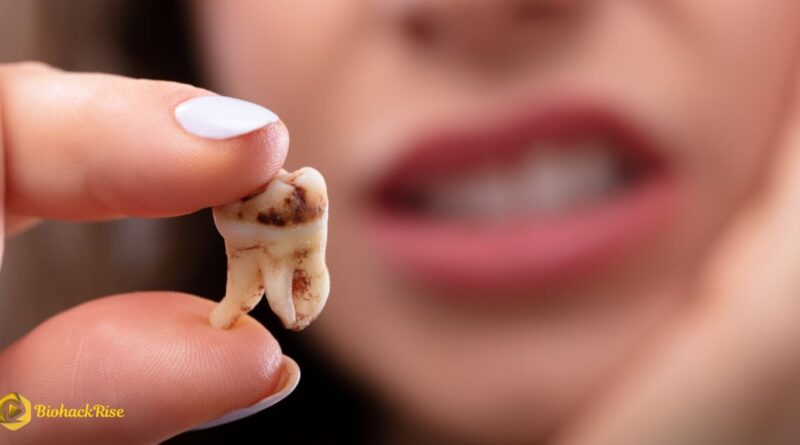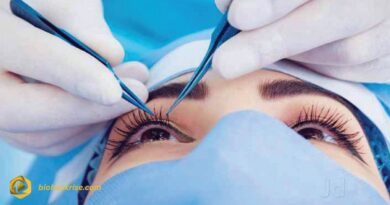Are Cavities Contagious? Hidden Truth Behind Tooth Decay
Have you ever wondered whether cavities are contagious? It sounds strange, right, like catching a cold or the flu from someone else. But the truth might surprise you. Cavities aren’t just the result of eating too much sugar or skipping brushing now and then.
They actually have a bacterial component, meaning they can potentially spread from one person to another through everyday habits like kissing, sharing food or even blowing on a child’s food to cool it down.
Understanding whether cavities are truly contagious is more than just an interesting topic, it’s crucial for your family’s dental health. If bacteria can spread, prevention becomes more than personal hygiene; it becomes a family-wide responsibility. So, let’s dive deep into what makes cavities tick, how bacteria travel and most importantly, what you can do to protect yourself and your loved ones from this sneaky oral invader.
Understanding Cavities: What They Really Are?
Cavities, scientifically known as dental caries are tiny holes or structural damage that form in your teeth. They start small, but if left untreated, they can grow and lead to pain, infection and even tooth loss. To understand whether cavities are contagious, we first need to unpack what causes them in the first place.
The Science of Tooth Decay
Tooth decay occurs when the enamel, the hard outer surface of your teeth, gets worn down by acid. This acid is produced by bacteria that feast on leftover sugars and carbohydrates in your mouth. Over time, the enamel weakens, forming a soft spot that eventually turns into a cavity.
How Cavities Develop Over Time?
It’s not an overnight process. It begins with plaque formation, a sticky, colorless film that builds up on teeth. When plaque isn’t removed by brushing and flossing, it hardens into tartar.
Beneath this layer, acid continues to attack the enamel, drilling microscopic holes. Once the decay breaches the enamel, it reaches the dentin, where pain and sensitivity begin.
What Causes Cavities?
When we talk about cavities, most people immediately think of candy, soda, or skipping a brushing session. While those factors definitely play a role, they’re only part of the picture.
The real culprit is bacteria, specifically, acid-producing bacteria that thrive in the warm, moist environment of your mouth.
Role of Bacteria in Tooth Decay
The star villain here is Streptococcus mutans. This bacteria clings to the surface of your teeth, forming sticky biofilms (also known as plaque). Every time you eat something sugary or starchy, these bacteria go to work.
They digest those sugars and produce acids as waste. The acids then attack your tooth enamel, slowly dissolving it over time. Once the enamel is compromised, the bacteria move deeper, reaching the dentin layer, where decay progresses more rapidly.
Diet and Sugar Consumption
Sugar is the bacteria’s favorite fuel. When you eat sugary snacks or drink sodas, you’re basically hosting an all-you-can-eat buffet for the bacteria. But it’s not just candy; even foods like bread, pasta, and fruits contain carbohydrates that can break down into sugars.
A key factor here is frequency rather than quantity. It’s better to eat one dessert with a meal than to sip on soda throughout the day. Why? Because each sip restarts the acid attack cycle, extending the time your enamel is under siege.
Poor Oral Hygiene Practices
No matter how balanced your diet is, skipping regular brushing and flossing creates a perfect environment for bacterial growth. When plaque builds up, it traps acids and food debris close to your teeth, worsening decay.
And remember, toothbrushes and other oral hygiene tools can harbor bacteria too. If you share them with others or don’t replace them often, you could be unknowingly helping those harmful microbes spread.
Can Cavities Actually Be Contagious?
Now comes the million-dollar question: Can cavities spread from one person to another?
Technically, cavities themselves aren’t contagious but the bacteria that cause them are.
The Bacterial Transmission Theory
Research has shown that Streptococcus mutans can easily pass from one person to another through saliva. That means if someone with this bacteria kisses their partner, shares utensils or blows on food for a child, they can transmit the bacteria responsible for tooth decay.
Once these bacteria find a home in another person’s mouth, they begin to colonize and create the same cavity-causing environment.
This theory isn’t new. In fact, studies have found that infants and toddlers often “inherit” their oral bacteria from their mothers or primary caregivers.
Common Misconceptions About Cavities
A lot of people believe that cavities are simply the result of eating too much sugar or not brushing enough. While those are major contributors, they miss the bacterial component.
Without the presence of S. mutans, even a sugary diet might not lead to cavities as quickly. So yes, in a way, cavities can be considered socially transmissible. You’re not likely to “catch” one from a handshake or a sneeze, but through saliva exchange, the risk becomes very real.
How Cavity-Causing Bacteria Spread Between People?
Believe it or not, cavity-causing bacteria can spread in many everyday situations you probably haven’t even thought twice about.
Kissing and Sharing Utensils
Romantic kissing, pecks on the lips, or even sharing drinks and utensils can transfer S. mutans from one person to another. Think about it — when two people kiss, they exchange millions of bacteria. If one person has high levels of cavity-causing bacteria, the other person can easily acquire them. The same goes for sharing forks, spoons, or even straws.
Parents and Children: The Hidden Transfer
Parents often unknowingly pass cavity-causing bacteria to their kids. Common habits like tasting a baby’s food, sharing spoons, or cleaning a pacifier with your mouth are all potential transmission routes. Since children’s immune systems and enamel are still developing, they’re especially vulnerable to bacterial colonization.
Other Everyday Habits That Spread Oral Bacteria
Even small gestures like blowing on someone’s food to cool it down or sharing a toothbrush holder can lead to bacterial transfer. In households, shared environments, and close relationships, the bacteria can easily circulate.
What’s important to remember is that while we can’t (and shouldn’t) avoid human contact, understanding how bacteria spread empowers us to adopt smarter hygiene habits that prevent long-term dental issues.
Scientific Studies Supporting the Contagion Theory

You might be thinking, “This all sounds logical, but is there any real science behind it?” Absolutely. Over the past few decades, dental researchers have conducted numerous studies to determine whether cavity-causing bacteria can spread from one person to another and the findings are quite eye-opening.
Research on Streptococcus mutans
In a landmark study published by the Journal of Dental Research, scientists found that Streptococcus mutans, the primary bacteria responsible for tooth decay, is often transmitted from mother to child during early development. When researchers analyzed saliva samples from families, they discovered identical bacterial strains among parents and their kids, confirming direct bacterial transmission through shared saliva.
Another notable study by the Centers for Disease Control and Prevention (CDC) revealed that couples who frequently kissed or shared utensils were far more likely to have matching strains of S. mutans. Essentially, the bacteria were thriving and spreading between partners just like any other microorganism would.
Evidence of Oral Microbiome Transfer
Your mouth is home to a complex ecosystem of over 700 different bacterial species collectively known as the oral microbiome. When you engage in close contact with someone (like kissing), you don’t just swap affection; you’re also exchanging microbial communities. Studies using DNA sequencing have shown that these bacterial populations can quickly adapt and establish themselves in new hosts, sometimes within hours.
Interestingly, people in long-term relationships often share similar oral microbiomes, which include both good and harmful bacteria. This microbial blending explains why cavity-causing bacteria tend to circulate within families and couples more than among strangers.
RELATED POST: Dan Bongino Wife Accident Truth Behind the Story
Who Is Most at Risk of Contracting Cavity-Causing Bacteria?
Now that we know cavities can spread through bacterial transmission, the next question is: who’s most at risk? While anyone can develop cavities, certain groups are more susceptible due to biological, behavioral, or environmental factors.
Children and Toddlers
Children are by far the most vulnerable. Their developing immune systems and thinner enamel make it easier for bacteria to colonize and cause damage. Because kids often get exposed to bacteria through their parents’ saliva from shared spoons or pacifiers early prevention is crucial. Studies show that most children acquire Streptococcus mutans from their mothers before the age of three.
Also, young kids typically consume more sugary foods and may not brush effectively, further increasing the risk. Parents must understand that their own oral health directly impacts their children’s dental future.
Couples and Family Members
Couples who share drinks, kiss often, or live in close quarters tend to share bacterial strains. In fact, long-term partners often have remarkably similar oral microbiomes. If one partner neglects dental hygiene, it can create a cycle of reinfection where bacteria continuously transfer back and forth.
Families also share common risk factors, such as diet and habits, which contribute to bacterial spread. That’s why family dental care including consistent checkups and hygiene routines plays such an important role in oral health.
People with Weakened Immune Systems
Those with compromised immune systems (due to illness, medications, or conditions like diabetes) are more prone to bacterial infections, including oral ones. Their bodies struggle to maintain a healthy bacterial balance, making it easier for harmful microbes to thrive.
In these cases, even a mild bacterial transmission from a partner or caregiver can lead to accelerated decay or gum disease. For such individuals, meticulous hygiene and regular professional care are non-negotiable.
Symptoms of Early Bacterial Transfer and Tooth Decay
Cavities don’t appear overnight; they start with subtle signs that are easy to ignore. Recognizing the early symptoms of bacterial colonization and tooth decay can help you act before real damage sets in.
Recognizing Early Signs of Infection
Here’s what to look for:
- White or brown spots on teeth: These spots indicate enamel demineralization, the first visible sign of decay.
- Increased tooth sensitivity: If you feel a sudden jolt when eating hot, cold, or sweet foods, it might mean enamel is thinning.
- Bad breath (halitosis): Persistent bad breath could signal bacterial buildup that’s producing sulfur compounds.
- Sticky plaque or rough textures: If your teeth feel rough even after brushing, plaque may be accumulating faster than you can remove it.
- Bleeding gums: While this is more linked to gum disease, it often accompanies bacterial overgrowth that leads to cavities.
How to Prevent the Spread?
If you suspect you or someone close to you might have a high bacterial load, don’t panic prevention is absolutely possible:
- Avoid sharing utensils or drinks.
- Kiss responsibly: Limit mouth-to-mouth contact when someone is actively treating cavities or gum disease.
- Brush at least twice daily with fluoride toothpaste.
- Use antibacterial mouthwash to reduce bacterial colonies.
- Visit your dentist regularly to identify and treat early signs of decay.
Preventive Dental Care to Stop the Spread of Cavities
Prevention is always better than cure and when it comes to cavities, that couldn’t be more true. Once bacteria that cause decay enter your mouth, they can be difficult to completely eliminate. However, maintaining a strong preventive routine can drastically reduce the chances of bacterial buildup and transmission.
Brushing and Flossing Techniques
Proper brushing and flossing are your first line of defense. Many people think that brushing twice a day is enough but how you brush matters just as much as how often.
Use a soft-bristled toothbrush and fluoride toothpaste. Brush in gentle circular motions for at least two minutes, making sure to reach every surface, including along the gum line. Most people overlook the back molars and inner surfaces of the teeth prime spots for bacterial growth.
Regular Dental Checkups
Even if your teeth look fine, visiting the dentist twice a year is essential. Dentists can detect early signs of decay or bacterial infection long before you feel pain or see visible cavities. Professional cleanings remove tartar and plaque buildup that brushing alone can’t handle.
Moreover, many dental offices offer fluoride treatments or sealants protective coatings that strengthen enamel and block bacteria from attaching to tooth surfaces. If you’re prone to cavities or share close contact with someone who is, these treatments can make a big difference.
Using Antibacterial Mouthwash
Mouthwash often feels like a bonus step, but it’s actually one of the most effective ways to reduce bacterial spread. Antibacterial mouthwashes containing ingredients like chlorhexidine or essential oils help kill Streptococcus mutans and other harmful microbes.
Make it a part of your routine, especially after meals or before bed. It not only freshens breath but also keeps your oral microbiome balanced, preventing the bacteria from multiplying or spreading to others.
Diet and Nutrition for a Cavity-Free Mouth
What you eat doesn’t just affect your waistline, it plays a huge role in your dental health too. Some foods feed harmful bacteria, while others help protect your enamel and maintain a balanced pH in your mouth.
Foods That Strengthen Teeth
Calcium-rich foods like milk, cheese, and yogurt help remineralize enamel. Cheese, in particular, neutralizes acid and stimulates saliva production — nature’s built-in mouthwash. Crunchy fruits and vegetables like apples, carrots, and celery also act as natural toothbrushes, scrubbing away debris while increasing saliva flow.
Leafy greens and nuts provide essential minerals such as phosphorus and magnesium, which contribute to strong, healthy teeth. Green tea and black tea also contain natural polyphenols that reduce bacterial growth in the mouth.
Sugary Foods to Avoid
Sugar is the main energy source for cavity-causing bacteria. Every time you eat sweets, those bacteria convert sugar into acid that erodes enamel. The more often you snack, the longer your teeth remain under acid attack.
Avoid sticky candies, soda, sports drinks, and even “healthy” fruit juices, which often contain high sugar levels. If you can’t give them up completely, consume them with meals rather than as snacks, and rinse your mouth with water afterward.
The Role of Fluoride in Prevention
Fluoride is a mineral that helps remineralize enamel, making it more resistant to acid attacks. Most toothpaste and municipal water supplies contain fluoride for this reason. Using fluoride toothpaste and mouthwash daily can significantly lower your risk of cavities.
If your area lacks fluoridated water, talk to your dentist about supplements or professional fluoride treatments. It’s one of the simplest, most effective tools we have to combat bacterial decay.
Can Good Oral Hygiene Stop Cavity Transmission?

Yes, strong hygiene habits can drastically reduce the likelihood of spreading cavity-causing bacteria. While you can’t completely sterilize your mouth, you can create an environment that’s hostile to harmful bacteria and supportive of healthy microbes.
Maintaining Personal Oral Care Tools
Never share toothbrushes. It might sound obvious, but you’d be surprised how many people in families or couples do this in emergencies. Toothbrushes carry a mix of saliva, bacteria, and even blood from the gums. Sharing them is like sharing a colony of bacteria directly.
Replace your toothbrush every three months, or sooner if the bristles fray. Store it upright and let it air dry, bacteria thrive in moist environments, so covering it immediately after brushing traps moisture and encourages microbial growth.
Disinfecting Toothbrushes and Appliances
Rinsing your toothbrush with hot water after each use helps kill bacteria. You can also soak it in a mild antiseptic mouthwash for a few minutes weekly. For dentures, retainers or mouthguards, clean them daily using dentist-approved cleaners.
If one household member has an active cavity or gum infection, keep their toothbrush stored separately to prevent cross-contamination.
How Parents Can Protect Their Children from Cavity-Causing Bacteria?
Parents play a huge role in shaping their children’s dental health. Unfortunately, many unknowingly transfer harmful bacteria to their kids during everyday routines. The good news? A few mindful changes can break that cycle completely.
Avoiding “Saliva Sharing” Habits
It’s natural for parents to show affection, but certain habits increase the risk of bacterial transfer:
- Sharing utensils or cups
- Cleaning pacifiers with your mouth
- Blowing on food to cool it down
- Kissing children on the lips
These seemingly harmless acts can introduce cavity-causing bacteria into a child’s mouth. Instead, use separate utensils, clean pacifiers with water, and let food cool naturally.
Teaching Early Oral Care Habits
Start brushing your child’s teeth as soon as they appear, even baby teeth matter! Use a soft brush and a rice-sized dab of fluoride toothpaste. As they grow, teach them proper brushing techniques and make oral care a fun daily routine.
Encourage flossing once their teeth begin touching and schedule their first dental visit by age one. Early education instills lifelong habits and minimizes future risks.
Parents should also maintain their own dental health. Children model behavior, so when they see you brushing, flossing, and visiting the dentist regularly, they’re more likely to follow suit.
Debunking Myths About Cavity Contagion
The idea that cavities might be “contagious” sounds almost unbelievable at first. After all, we don’t typically think of dental problems as something you can “catch.” However, as research shows, there’s some truth behind it. Unfortunately, this truth has also given rise to plenty of myths. Let’s clear the air and separate fact from fiction.
“You Can Catch Cavities Like a Cold” – True or False?
False, at least, not in the way most people think. You can’t catch a cavity directly like you would a viral infection such as the flu or COVID-19. Cavities aren’t caused by viruses but by bacteria (Streptococcus mutans being the main one).
That said, the bacteria responsible for cavities can spread through saliva exchange, meaning that if someone with high levels of S. mutans kisses, shares utensils, or even sneezes nearby, those bacteria can potentially transfer to another person’s mouth.
Clarifying the Role of Genetics vs. Environment
Another myth is that cavities are purely genetic. While genetics play a small role (for example, influencing enamel thickness, saliva composition, or tooth shape), environmental factors are far more impactful.
Your daily habits, how often you brush, what you eat, whether you share utensils, or how regularly you visit the dentist determine your risk more than your DNA does. Families often share similar bacterial strains and diets, which explains why cavities can “run in the family” even though the cause isn’t hereditary.
Myth: “If You Brush Every Day, You’re Safe from Cavities.”
Unfortunately, that’s not entirely true either. Brushing daily helps, but it doesn’t always eliminate all bacteria. If you brush too quickly, skip flossing, or use a worn-out toothbrush, plaque can still build up in hard-to-reach spots.
Also, if your diet includes frequent sugary snacks or drinks, bacteria can continue producing acid between brushings. The best approach combines brushing, flossing, fluoride use and regular dental visits. Preventive care, not perfection, keeps bacteria under control.
Treatment Options for Cavities and Bacterial Control
Even with the best care, cavities can still happen. When they do, early detection and proper treatment can prevent them from turning into major dental problems. Modern dentistry offers several effective options for repairing damage and controlling bacteria.
Professional Cleaning and Fillings
The first step in treating cavities is a professional dental cleaning. Dentists remove plaque and tartar buildup, which harbor bacteria and acid. If decay is already present, the dentist removes the damaged portion of the tooth and fills it with materials such as composite resin, amalgam, or porcelain.
Fillings not only restore the tooth’s function but also seal it off from further bacterial invasion. In severe cases where the decay reaches the pulp (the tooth’s inner nerve chamber), a root canal may be necessary to remove infected tissue and save the tooth.
Fluoride Treatments and Dental Sealants
Fluoride treatments strengthen enamel and help reverse early decay by remineralizing weak spots before they become full-blown cavities. Dentists often recommend fluoride varnishes or gels for children and adults at higher risk of cavities.
Dental sealants, on the other hand, are thin coatings applied to the chewing surfaces of molars. They act as barriers, preventing bacteria and food from settling into tiny grooves where toothbrushes can’t reach. Sealants are especially effective for children and teens but can benefit adults as well.
Managing Oral Bacteria Levels
If you’re prone to recurrent cavities, your dentist may suggest antibacterial treatments such as chlorhexidine mouth rinses or prescription fluoride toothpaste. These help reduce bacterial populations and make your mouth less hospitable to harmful microbes.
Additionally, some research suggests that probiotics “good bacteria”, may help balance your oral microbiome. Foods like yogurt, kefir and fermented vegetables can encourage healthy bacterial growth, crowding out the harmful strains that cause decay.
Remember: dental treatments can fix cavities, but controlling bacteria prevents them from coming back. Maintaining consistent oral hygiene and watching your habits after treatment ensures long-term protection.
FAQ’s
Can you catch cavities from kissing?
Yes, the bacteria that cause cavities can be transmitted through kissing. If one person has high levels of Streptococcus mutans, the other person may acquire those bacteria through saliva exchange.
Are cavities more common in families?
Absolutely. Families often share eating utensils, food, and close contact, which allows cavity-causing bacteria to circulate among members, especially from parents to children.
How can I stop bacteria from spreading to my kids?
Avoid saliva-sharing habits like blowing on food or sharing spoons. Encourage proper brushing early and maintain your own dental health, as kids often “inherit” their parents’ oral bacteria.
Do antibacterial mouthwashes really work?
Yes, mouthwashes containing chlorhexidine, essential oils, or fluoride can reduce harmful bacteria levels, freshen breath, and strengthen enamel when used consistently.
Can someone with good oral hygiene still get cavities?
Yes, if they have high bacterial levels, dry mouth or a diet rich in sugar. Even with perfect brushing, environmental and genetic factors can still make some people more cavity-prone.
Conclusion
So, are cavities contagious? The answer is: not exactly, but the bacteria that cause them are. Cavities don’t spread like viral infections, but through saliva exchange, harmful bacteria can transfer from one person to another. Whether it’s through kissing, sharing utensils, or other daily habits, those microbes can find a new home in another mouth and start their destructive work if conditions are right.
The good news is that you’re not powerless. With good oral hygiene, a balanced diet, and regular dental care, you can stop bacteria in their tracks. And by practicing mindful habits like not sharing toothbrushes or utensils, you can protect your loved ones from infection.




